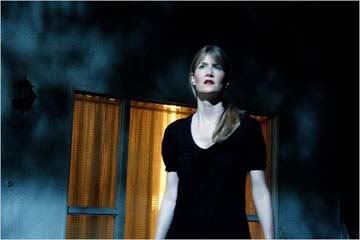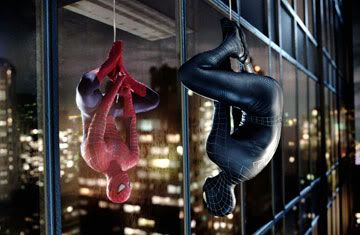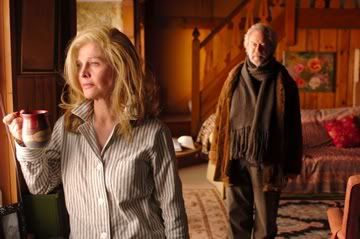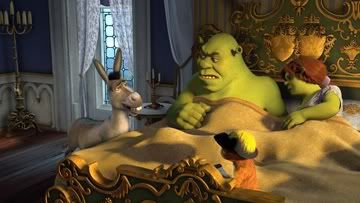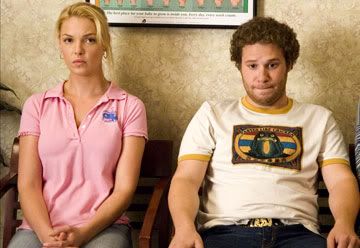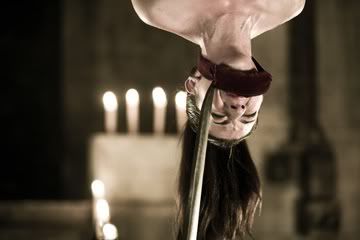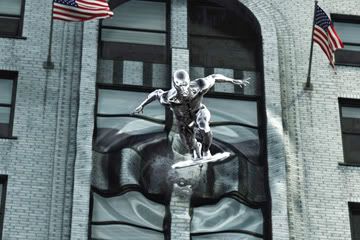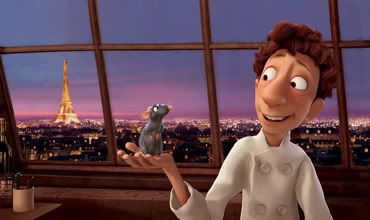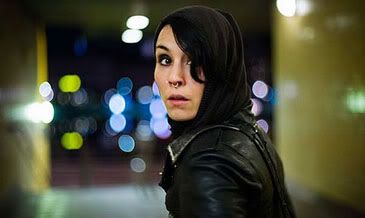

Archive: "Hot Fuzz" (2007)
Just as "Shaun of the Dead" would make George A. Romero scoff whole-heartedly at himself, "Hot Fuzz" would make Michael Bay slap himself in the forehead. In many ways, the two movies are very similar; they're filmed in the same fast-paced, quick-moving fashion and are infused with the same type of ironic and sharp humor. These guys take what made "Shaun of the Dead" so great and original, and shove it all into an entirely different genre, and come up with the same result.
Sergeant Nicholas Angel (Simon Pegg) is the best cop in London with a higher arrest rate than any other officer. However impressive he may be, the heads of the police force see him as a threat to making the rest of the officers look bad. As a result, Angel is sent away from the big city and transferred to a sleepy village in the country, Sandford. The movie opens right away with the distinct taste of British humor; there are even notable cameos from big British actors like Steve Coogan and Bill Nighy. The entire first half of the movie plays out this way with clever and witty humor, slowly gaining momentum before it shifts into something completely different. And so, Sergeant Angel reluctantly arrives at Sandford and becomes frustrated as he realizes the biggest crime going on here is a swan on the loose.
Angel soon meets up with another local cop, Danny Butterman (Nick Frost), who is envious of all Angel has done and wishes to do those things, thinking they're similar to what he sees in his favorite American action flicks. Eventually Butterman sits Angel down to some of these flicks such as "Bad Boys II." What is so funny about this is that later there's a scene that shows Angel and Butterman holding out guns as the camera swirls epically around them, just like in "Bad Boys II." Butterman is a fan of action movies not realizing that he's actually living one with Sergeant Angel by his side. This ironic humor that was also present in "Shaun of the Dead" is fully accounted for here, as well. As Angel observes the town of Sandford and witnesses horrific events, the townspeople don't realize what's right in front of them, just like the people in "Shaun of the Dead" failed to realize their neighbor was a zombie.
These horrific events include surprisingly graphic murders including gardening shears through the neck, decapitation, incineration, and even somebody's head getting bashed in with the top of a church steeple. The townspeople and especially the police department agree, though, that these were all accidents and should not be considered as connected murders. Meanwhile, Angel keeps seeing the same mysterious man show up at each crime scene, saying strangely foreshadowing phrases which are humorously obvious to the viewer, but everyone else is still oblivious. The police don't want to admit that there's something deadly going on in their village because the "Village of the Year" judging is right around the corner and everything must remain crime-free and perfect as it always has been.
When these murders start happening, that's when Angel's cop instincts go into overdrive. Recruiting Butterman along with him, he's determined that there's a dark secret hidden in this village and he's determined to discover what it is. Butterman and Angel are a comedic match made in heaven and work hilariously together. These two actors, Simon Pegg and Nick Frost, are the same two guys who starred in "Shaun of the Dead," and it's great to see them back together again in a buddy flick. Frost plays the same bumbling idiot, but Pegg takes on a new role from the timid Shaun he played before. In whole, these two guys are the heart of the film; when the two of them go to the pub and for the first time Angel lets loose, that's when the movie shifts into its entirely new direction to become an explosive action movie.
The last 30 minutes of the movie are the most insanely entertaining of the entire movie and are worth the 2-hour running time. It officially turns into a full-blown action flick, squeezing in as many big-budget action movie clichés as humanly possible. As the guns go blaring and the melodrama rises to an all-time maximum, viewers must keep in mind that the movie is most definitely not taking itself seriously. The genre is still being spoofed even when the action sequences are done this well. What makes this, along with Shaun of the Dead, so great is that it takes its subject seriously while also poking fun at it and actually functions as well as the genre it's parodying. Sure it's all meant to be fun and games, but the actual shootout sequences are the real deal here, too.
"Hot Fuzz" plays out almost like a double-feature with quirky, dry British humor and explosive action sequences. It's a parody on a genre we love as Americans, so it's even more tongue-in-cheek when this movie is coming from British filmmakers. These guys definitely know how to spoof something and have constructed a wildly clever comedy for the second time now. This is funny stuff.


